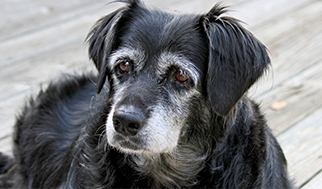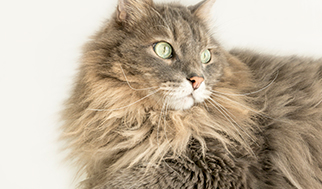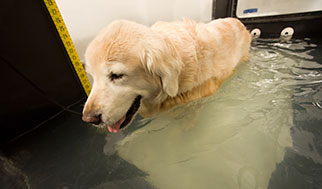Palliative Care
Our goal for our animal companions is to keep them feeling as good as they can for as long as they can. Quality of life means more than the length of life; we can add up scores for factors such as pain control, appetite and general happiness to help with making decisions about next steps for a terminally ill pet.


We want the pet to still enjoy the things that make life worth living: some pet-and-cuddle time, a favourite food, a loved toy, a walk on a nice day.
Not all conditions can be cured. What we can do is mitigate the effects of a condition, such that that condition is not what defines the life of that pet.
Palliative care aims to restore the pet to a level of comfort and contentment.
Pain Control
This is the foundation of palliative care. If pain can not be controlled, then Quality of Life can not be maintained. This usually involves Multi-Modal Pain Therapy: targeting pain at different sites along the pain pathway.
Nutritional Support
A body that does not get enough nutrients to function can not feel good; but unfortunately nutrition can be a challenge in chronically ill pets, both because their illness may impact their appetite, and because their nutritional needs may be changed by the disease state.
- Intake
The ultimate hope is that by diminishing pain, we bring back appetite. When we do need a boost to intake, options include medications that stimulate appetite, and special high-nutrient foods that can be syringe-fed. These food are concentrated, so a little goes a long way!
- Targeted Nutrition
There is no one-size-fits-all in critical care nutrition! Each pet, in each circumstance, needs to be evaluated for the best nutritional balance that will provide for optimal maintenance of body condition and of quality of life. The protein balance, fat content, carbohydrate content and fibre content all have to be taken into consideration in different ways for different conditions.
- Supplements
There are a lot of options for supplemental support of the body’s function! For example, omega-3 fatty acids help to decrease inflammation, glucosamine supports cartilage health and repair, and arginine can short-circuit the division of cancer cells. We will work together to come up with a plan to help support your pet’s health.
Rehabilitation
 Mobility should be maintained as well as possible; and physical issues such as pressure sores or tightened up muscles need to be addressed.
Mobility should be maintained as well as possible; and physical issues such as pressure sores or tightened up muscles need to be addressed.
Special physical exercises can help maintain strength and range of motion.
Massage techniques can ease stiff muscles.
Items such as orthopedic foam beds or supportive braces can protect tissues from damage.
We are pleased to refer clients to a formal rehabilitation facility based on your pets needs.
We can also use Laser Therapy to help manage sites of pain or inflammation.

